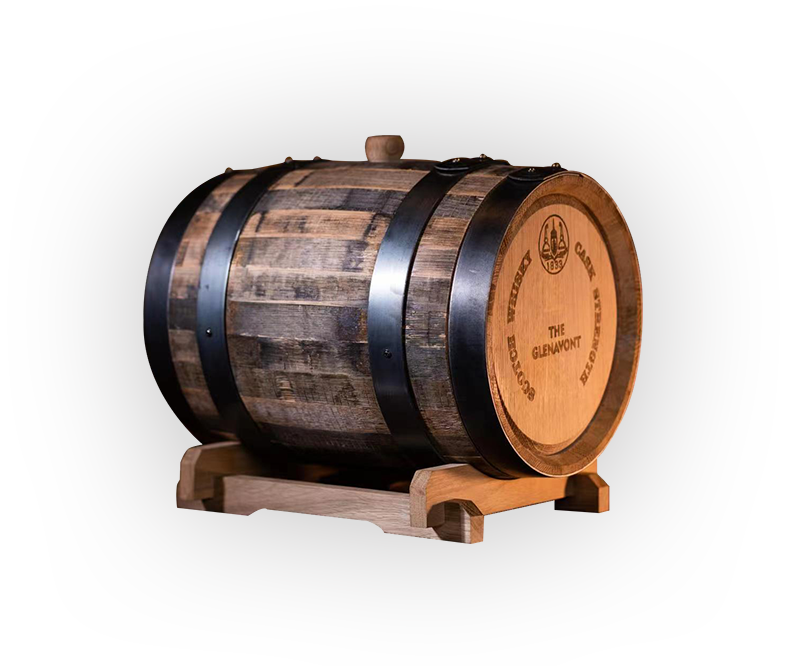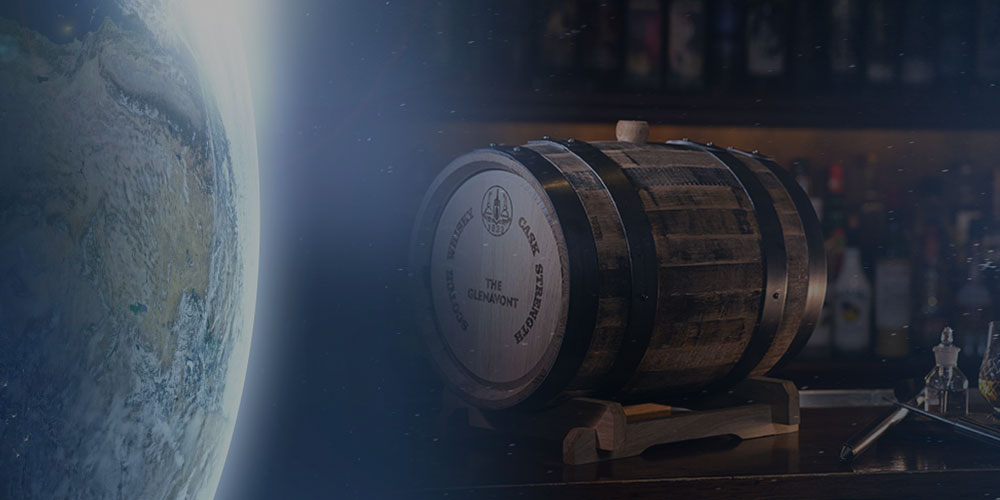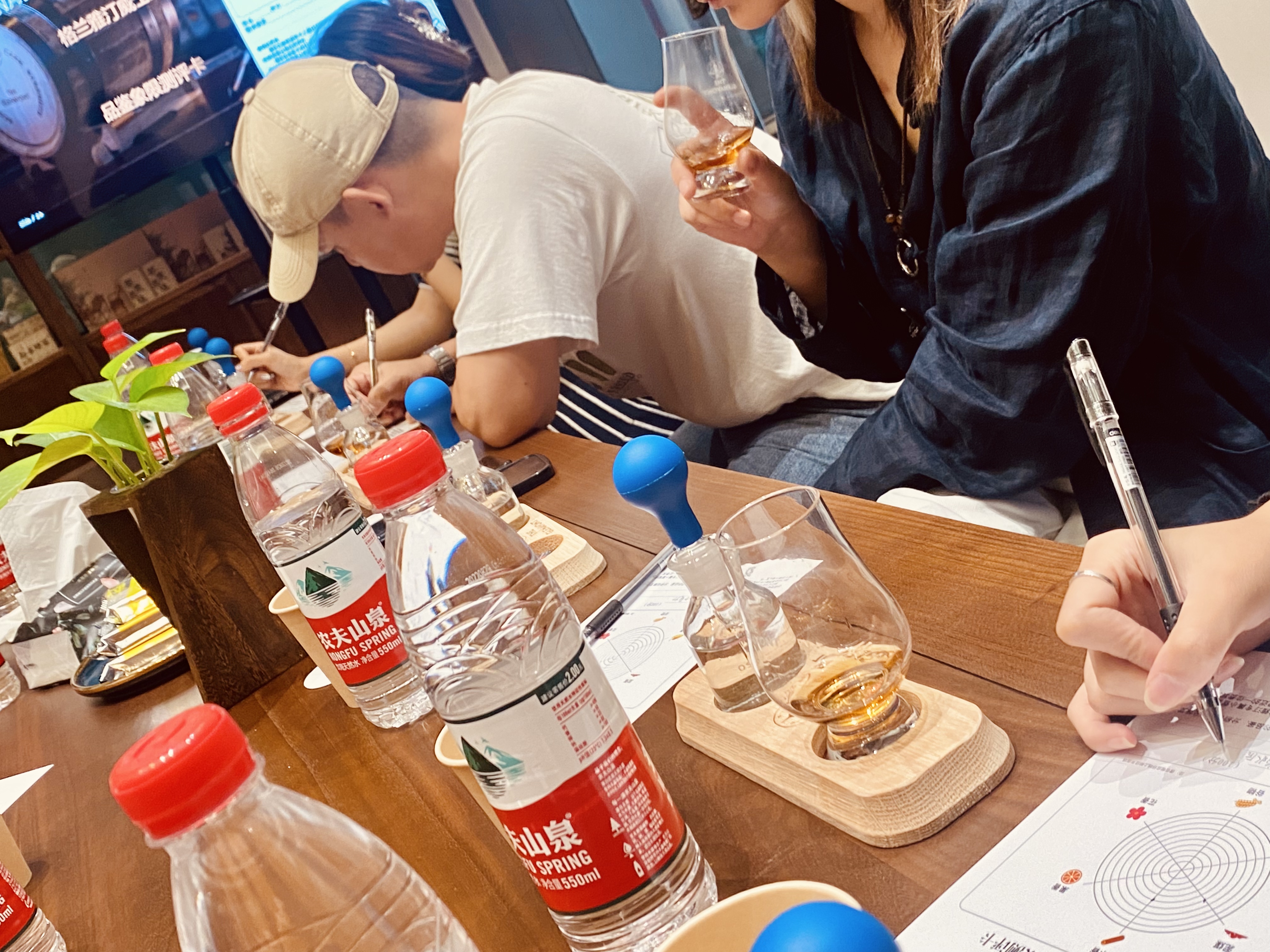




There is no bad whiskey, only good and better.
——Raymond Chandler Raymond Chandler
Whiskey's complex and charming flavor and layered aroma combination make it the favorite spirits in countless people's hearts. There are many ways to drink whiskey, such as pure drinking, water, ice, hi bar, cocktail and so on. So, how to taste a whisky professionally, so as to appreciate its unique taste to the greatest extent?
Let's take advantage of The Glenavont (Granja Ting) tasting in Qingdao Ruifuxuan on September 29th to find out.
Tasting Glass
Select tasting cup
If you want to do a good job, you must sharpen your tools first. If you want to have a professional tasting, you must first choose a good cup for tasting. Different cup types, no
The width of the belly of the cup, the shrinkage of the mouth of the cup or the eversion of the rim of the cup will all affect the effect of smelling and drinking. The higher the concentration of the closing of the cup, the more concentrated the fragrance will be. However, as a strong liquor, whiskey has a high alcohol concentration, so it is not advisable to choose a cup with too small necking, and it is easy to smell too much pungent alcohol. At the same time, it is not recommended to use cups with too wide edges, which will make the aroma dissipate too quickly.
Common whisky tasting cups on the market include Gran Cain Smelling Cup, Tulip Cup, ISO Cup, Classical Cup, etc. The Glenavont (Granja Ting) also prepared a tasting cup for everyone at the beginning of the tasting-Glencairn can be said to be an ideal glass for whisky connoisseurs and lovers. The details are in place. The slightly wide belly of the cup effectively condenses the aroma and then releases it from the slightly narrow mouth perfectly, which can help people catch all the aroma more easily and quickly, and identify the physical characteristics of whiskey. It is not only suitable for all kinds of spirits, but also durable and easy to carry. It is the designated glass for many professional whisky competitions.

The Appearance
exterior
Pour the whisky stored at room temperature into the tasting cup, which is close to the widest part of the belly of the cup. Let it stand for a little while, and let it "breathe" the air first, so that the flavor characteristics it carries will emerge one by one.
Unlike "white spirits", whiskey is a kind of "brown spirits". Let's take a look at the color of the whisky in the glass. Is it bright light gold, full dark gold, russet, brass, dark amber, or elegant ruby?
The color we see mainly comes from two factors: the influence of oak barrels on whisky aging and the caramel color artificially added before bottling.
If it is a natural color whisky, those with lighter color and more golden color may usually be aged in bourbon barrels, while those with darker color and shades of brown and red are likely to be aged or finished in Shirley barrels or Porter barrels. On the other hand, under the influence of the same barrel shape, the darker the color of whiskey, the longer its aging time can be reflected.
Rotate and shake the tasting cup in a circle, so that the whisky can touch the inner wall of the cup as much as possible, which helps to extract the aroma at the bottom. Careful observation of the "legs" trickling down the wall of the glass indicates that the thicker the tears and the slower the dripping speed, the higher the viscosity, the fuller the texture of the wine, the stronger the oily texture, the richer and more complex the taste and the older the wine age.
Cover the mouth of the glass with your palm and shake the glass up and down. The slower the bubble disappears, the higher the alcohol concentration.
The Nose
Wen Xiang
Place the tasting cup about 10cm below your nose, inhale gently, and keep your mouth slightly open, so that you can better identify different aromas. The initial smell of whiskey may have a strong alcohol smell, so don't take a deep breath, let your nose have time to adapt to the alcohol content in it, and let the aroma drift away.
Smell is usually related to everyone's memory. Everything you can smell comes from the association caused by your own life experience, so it is a subjective expression, and there is no right or wrong. Some people can smell fresh fruit, ripe dried fruit, sweet toffee and faint flowers, while others can smell vanilla, cream, wood, smoke, sea salt and so on.
Then change the tilt angle of the tasting cup and the distance between the cup and the nose, and repeat it several times to explore the complete aroma of different shades and levels in different positions. There are also subtle changes in the smell of the first smell and the smell after standing for a few minutes. By the way, you can also rub your hand with whiskey just now, smell it, and feel the aroma of raw materials left in your palm.
The Palate
Shangwei
Now, take a sip of whiskey and savor the various flavors of whiskey after it enters your mouth. Don't swallow it in a hurry. Hold it in your mouth for a while. Your lips can keep an O-shape. Let the wine roll back and forth on your tongue for several times. Feel its taste and texture. Is it light and lively or round and heavy? Is it warm and crude or soft and gentle? What are the basic tastes of sweet, sour, bitter and salty? And what are the tastes at the tip of the tongue, on the surface of the tongue and at the base of the tongue?
Then swallow it slowly, and at the same time try to exhale a lot of air through your nose, let the aroma enter your nose from your mouth, and experience the various flavors and levels contained in whiskey. At first, the taste buds may be hit by the burning and spicy feeling caused by alcohol, but don't worry, the surprising fruity, floral, cereal, woody, spicy, herbal and peat flavors of whiskey will soon emerge. . Even the similar taste sensation of some foods may be aroused.
Is the remaining finish in the mouth short, medium or long? Is it dry or smooth? Is there a new smell coming out? An excellent whisky, and the performance of other rhymes will be remarkable, offering a perfect ending. In addition, the end rhyme can also judge the rich degree of this whisky. The longer and longer the aftertaste, the richer this whisky is.
Add Water
watering
When tasting professionally, usually after drinking pure whiskey, a drop or a few drops of water will be added with a dropper. Adding a little purified water at room temperature can greatly help the flavor extension and layering bloom of whiskey, further open the aroma of whiskey, enhance its various flavor characteristics, and at the same time, lighten the stimulation of alcohol, so that we can better taste a variety of wonderful flavor combinations.
But be careful not to add too much water, so as not to drown out the original obvious style of whiskey. It is also not recommended to use ice cubes. Some flavor substances will be locked due to temperature changes.
After adding water, let the whisky stand for a little while. During this time, the water will change the taste of the whisky when it is just drunk. Now smell it again to see if you can smell a new fragrance that you didn't smell before? Then repeat the previous tasting methods, try to capture the changes of aroma and flavor, and you will definitely find more surprise eggs!

With the accumulation of tasting experience, more and more flavors can be tasted, and the overall flavor image of this whisky will become more vivid and concrete in my mind. The Granja is to let you taste, savor, and enjoy. Every time you slowly explore the surprises you can feel, you will finally meet your favorite flavors in amber wine.

TEL:4006569976
WECHAT:THE GLENAVONT
Copyright GLENAVONT CO.,LTD All Rights ReservedKEEP ON RECORD :鲁ICP备xxxxxx号-xTECHNOLOGY :DaauuSITEMAP


